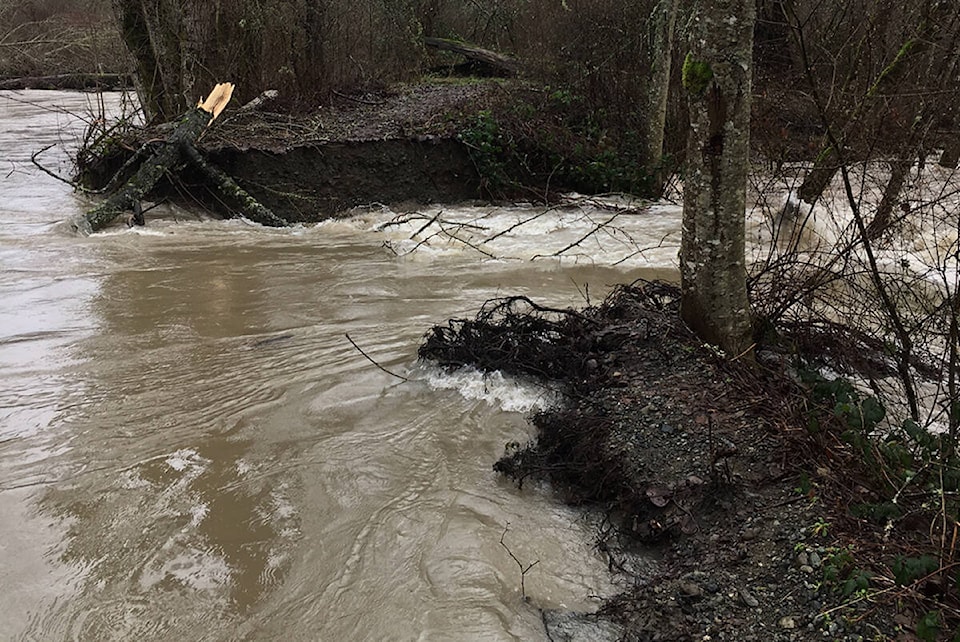Concern is being raised about the ║”ą▀▓▌蹊┐╦∙£worst chemical contamination ever done to our planet║”ą▀▓▌蹊┐╦∙Ø grabbing a foot-hold in the Okanagan Valley watershed.
Bob Hrasko, administrator for the Black Mountain Irrigation District (BMID), has sent out a memo to water management officials across the valley alerting them to the growing concern in the U.S. about chemical contamination caused by PFAS, or polyfluoroalkyl substances.
These hazardous PFAS-related substances are referred to as ║”ą▀▓▌蹊┐╦∙£forever chemicals║”ą▀▓▌蹊┐╦∙Ø because they don║”ą▀▓▌蹊┐╦∙Öt break down either in soil or water.
║”ą▀▓▌蹊┐╦∙£PFAS seems to be the number one issue regarding drinking water supply in the USA right now,║”ą▀▓▌蹊┐╦∙Ø said Hrasko in his memo.
PFAS chemicals are used in a variety of manufactured products because of their ability to withstand water, heat or oil, which also means the chemicals don║”ą▀▓▌蹊┐╦∙Öt easily, if at all, break down in the environment either.
Because they don║”ą▀▓▌蹊┐╦∙Öt naturally break down, PFAS has been linked to cancer, thyroid disruption, lower fertility rates in women, diabetes, liver problems, birth defects, immunosuppression and more.
Hrasko says these chemical components are found in an array of products, from teflon to Gore-Tex clothing, firefighting foams to dental floss, in a variety of heat-, water- or stain-resistant products.
║”ą▀▓▌蹊┐╦∙£They are everywhere in our society today and the problem now is the chemical companies knew this stuff could be dangerous and did not tell anyone, did not say anything for many years,║”ą▀▓▌蹊┐╦∙Ø Hrasko told Capital News.
An analysis was done last year by the Environmental Working Group (EMG) in an attempt to understand the scope of cropland contamination stemming from PFAS-contaminated sewage sludge or biosolids spread on farmland due to its nutrient-rich components.
The study estimated about 20 million acres of cropland in the U.S. may be contaminated by PFAS-tainted sludge.
EWG found Ohio keeps the most precise records of any state for sludge application, having been applied to about five per cent of its farmland since 2011. Extrapolating that figure across the rest of the country is how the 20 million figure was derived.
Records uncovered by the study show 19 billion pounds of sludge has been used as fertilizer since 2016 in 41 states where the sludge application is tracked, but not the locations where it is spread.
It is estimated that 60 per cent of the sludge generated in the U.S. is spread on cropland or other fields annually.
In Maine, PFAS-tainted fields have already forced several farms to shut down. The fear is the chemicals end up in crops and cattle, with the public health toll exacted by contaminated food in Maine still unknown.
Michigan faces a similar situation as it uncovers contaminated beef and farms, and growing evidence that links sludge to public health problems and contaminated drinking water.
Hrasko said BMID has tested upper Mission Creek and its Cornish Road and Scotty Creek wells with those sources showing no measurable levels for a number of the most common PFAS substances.
║”ą▀▓▌蹊┐╦∙£Currently there are ways to reduce the levels in water through ion-exchange process or through granular activated carbon filtration,║”ą▀▓▌蹊┐╦∙Ø said Hrasko in his memo.
║”ą▀▓▌蹊┐╦∙£The problem is that when collecting the contaminant, then what?║”ą▀▓▌蹊┐╦∙”as it goes into the landfill and it doesn║”ą▀▓▌蹊┐╦∙Öt break down.║”ą▀▓▌蹊┐╦∙Ø
But on a more positive note, Hrasko adds,║”ą▀▓▌蹊┐╦∙ØThis past year, there has been a huge amount of research in breaking down the strong chemical bond between the carbon and fluoride and they have made progress on processes to do so.║”ą▀▓▌蹊┐╦∙Ø
U.S. Department of Agriculture Tom Vilsack has called PFAS contamination on farms ║”ą▀▓▌蹊┐╦∙£a crisis,║”ą▀▓▌蹊┐╦∙Ø in a letter to the Maine congressional delegation in May of last year stating ║”ą▀▓▌蹊┐╦∙£the tragic reality of this situation extends far beyond Maine.║”ą▀▓▌蹊┐╦∙Ø
While Vilsack noted PFAS research continues, the USDA had limited options for providing support, adding ║”ą▀▓▌蹊┐╦∙£quite simply, the resources we have at the ready are not designed to comprehensively respond to the scope of the crisis.║”ą▀▓▌蹊┐╦∙Ø



